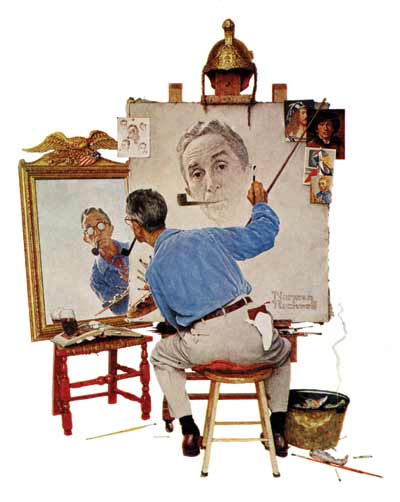Rockwell Finally Appears as Himself in Triple Self-Portrait

© SEPS
In 1960, Norman Rockwell produced one of the most famous self-portraits in American art. A naturally modest man, he clearly had some reservations about making himself the subject of a cover. He’d put himself on covers before, but usually only as a cameo, never the central figure.
In describing this work, Rockwell explained why his glasses look opaque. “I had to show that my glasses were fogged, and that I couldn’t actually see what I looked like — a homely, lanky fellow — and therefore, I could stretch the truth just a bit and paint myself looking more suave and debonair than I actually am.”
As visual reinforcement of his intentions, at the top of the easel, Rockwell has included a reminder to himself not to be taken in by appearances. He bought this helmet in a Paris antique shop, thinking it was the headdress of an ancient Greek or Roman soldier. Carrying it back to his hotel, he stopped to watch a firefighter working to save a burning building and realized that all French firemen wore helmets identical to the one he’d just purchased.
For all Rockwell’s self-deprecation, the painting is regarded by many as a thoughtful portrait of the artist’s three selves: the painter, the observer, and the public person.
This article is featured in the November/December 2017 issue of The Saturday Evening Post. Subscribe to the magazine for more art, inspiring stories, fiction, humor, and features from our archives.